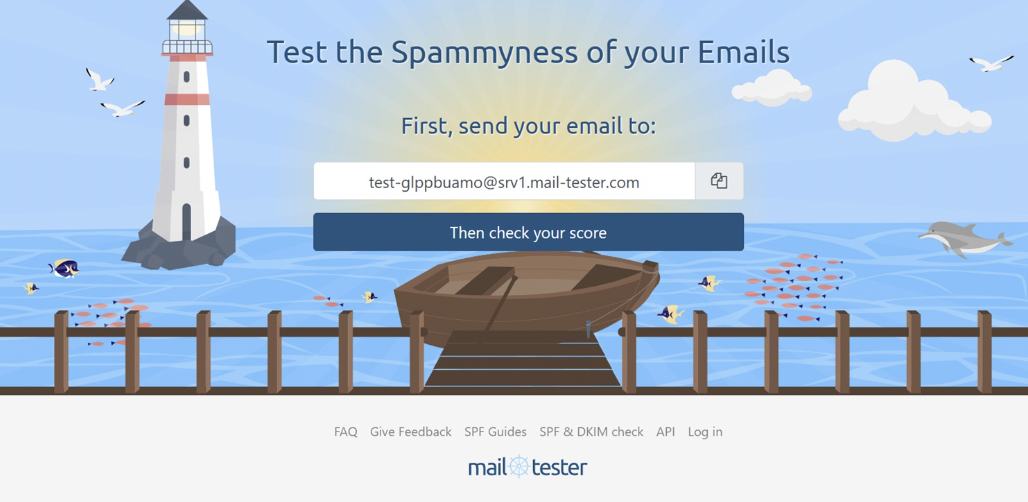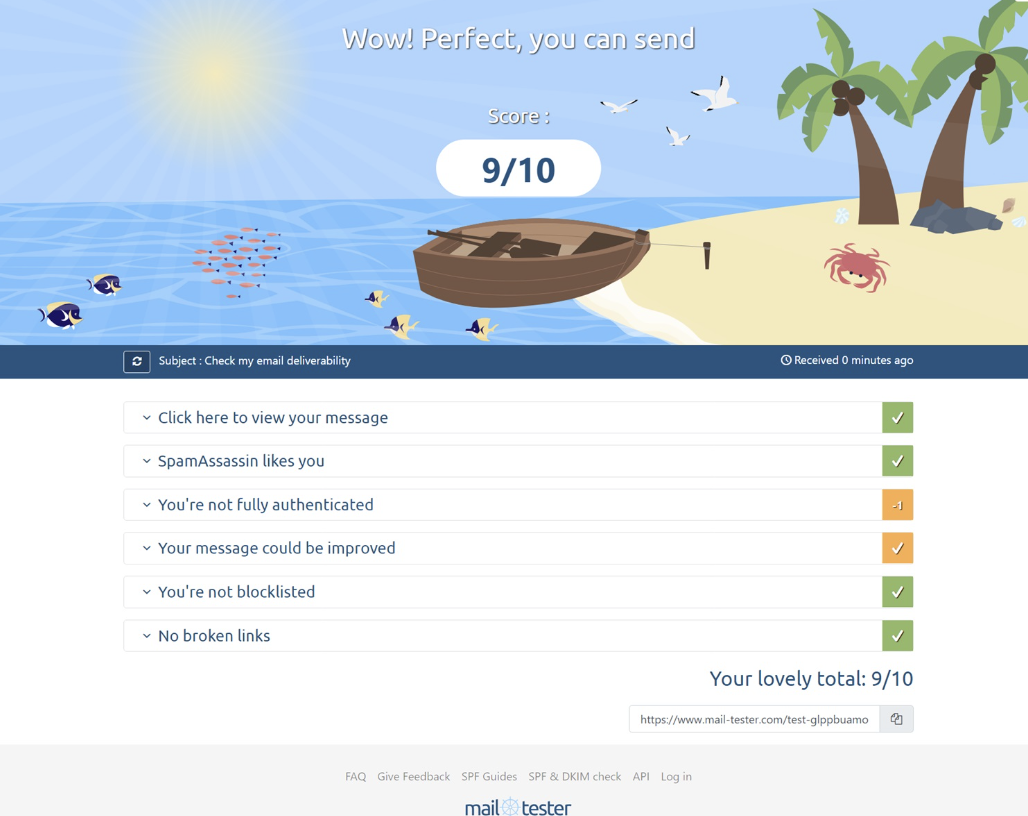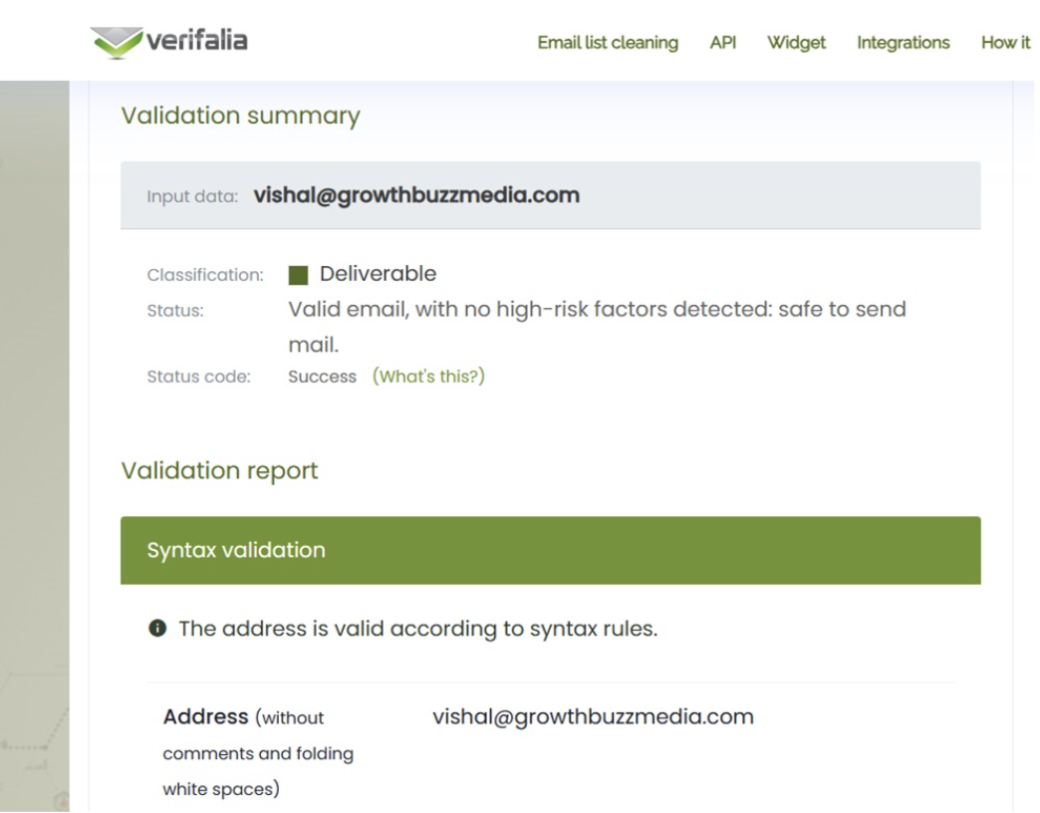How to Improve Email Deliverability

How to Improve Email Deliverability
Email is one of the vital tools for connecting with audiences, building relationships, and driving business success. But it only brings in business when it reaches your intended recipient. This is where email deliverability comes into play.
Email deliverability is the art and science of navigating the complex realm of spam filters and ISPs to ensure your emails land in the right place – the inbox.
To help you understand what it is and how it works, we have come up with a guide that tells you all about email deliverability and how you can optimize your email campaigns to achieve better results.
Find the best email marketing companies on The Manifest.
What is Email Deliverability?
Email deliverability refers to the number of emails that are not only delivered but land in the main inbox of your recipient where they notice your email and not in the spam folder where it simply gets ignored.
Only when an email reaches the main inbox of your recipient, will it have the chance to get opened, clicked, and interacted which leads to a conversion.
This means email deliverability is the key that takes you closer to your email campaign’s success.
Why is Email Deliverability Important?
Email deliverability is, without a doubt, one of the most important aspects of email outreach. Having high email deliverability is crucial for maximizing your reach and achieving better interaction and conversion rates.
On the other hand, when your deliverability is low, it means that either your emails are being marked as spam or not reaching the recipients at all, resulting in bounced emails. Both of these scenarios are serious issues that can lead to being marked as spam or even getting blacklisted by Internet service providers (ISPs).
When your emails frequently end up in the spam folder, you risk losing the trust of your subscribers. Moreover, a low email deliverability score will continue to decrease if corrective action is not taken on time. This can ruin all the efforts you put into your campaign, and all the money you spend on that email will only be used if it reaches the intended inbox.
This is why, as an email marketer, you need to put your heart to soul to maintain a good email deliverability rate.
What is a Good Email Deliverability Rate?
Your email deliverability score is a number between 0 and 100, with 100 being the best possible score. Though most email marketers aim for the 100, it is very hard to achieve the full score.
The best email deliverability rate or score varies from industry to industry. However, in general, a score of 90 or above is considered to be good, while a score of 80 or below can be bad for your email campaigns.
Hence, it is better to focus on the quality of your email lists rather than the quantity of it. A clean list with 100 high-quality and valid leads will give you better results and deliverability than a list with 1000 poor-quality leads.
How to Test Email Deliverability
Testing your email deliverability is an important step in ensuring that your emails reach your intended recipients. One of the easiest and most effective methods is to use an email deliverability testing tool like Mail-tester.

It is a free tool that marks your email deliverability score between 0-10. Here’s how you can run the test:
- Go to the Mail-tester website.
- Send an email to their provided email address.
- After sending the email, go back to the site and click on check your score button.
- This will return a score anywhere between 0-10.
In addition to your email deliverability score, it also highlights areas that might be affecting your email deliverability score negatively, such as broken links, whether your domain has been blacklisted, etc.
I checked my email deliverability with this tool, and here’s my score

My score is 9 out of 10. It is saying my email is not fully authenticated because my DKIM signature is missing. We will discuss more about DKIM later in the article.
What Affects Email Deliverability
Before looking at the ways to boost your email deliverability, you must understand which factors affect it.
1. Email Authentication
Email authentication is the process of verifying that you are the legitimate sender of the email message you are sending. This is done by using three main protocols: Sender Policy Framework (SPF), DomainKeys Identified Mail (DKIM) and Domain-based Message Authentication, Reporting, and Conformance (DMARC).
How it Affects Deliverability: Proper authentication (e.g., SPF, DKIM, DMARC) builds trust and tells ISPs that you are a trustworthy sender and that your emails are not spam. As a result, your emails are more likely to be delivered to inboxes.
2. Sender Reputation
Sender reputation is a score assigned to a sender's IP address or domain based on its email-sending practices. It's a measure of the sender's credibility and trustworthiness.
How it Affects Deliverability: A high sender reputation increases the likelihood of emails reaching the inbox, while a poor reputation can lead to emails being filtered as spam. Factors such as sending volume, engagement, complaint, and bounce rates contribute to the sender's reputation.
3. Bounce Rate
Bounce rate is the percentage of emails that couldn't be delivered to the recipient's inbox. Bounces can be categorized as hard bounces (permanent issues) or soft bounces (temporary issues). Hard bounce occurs when email is invalid, domain name is incorrect or recipient is unknown. However, in case of soft bounce, even if your email is valid, it bounces back because the recipient's server is down, the message is too large or the recipient's mailbox is full.
How it Affects Deliverability: High bounce rates can negatively impact the sender's reputation and email deliverability score. Frequent bounces signal to email service providers (ESPs) that the sender may be sent to outdated or purchased email lists, which can be a characteristic of spammers.
4. Email Content
Email content includes the subject line, body, and any attachments. ESPs analyze content to determine the relevance and value of an email to recipients.
How it Affects Deliverability: Spammy or irrelevant content can trigger spam filters. Practices like using all caps, excessive exclamation marks, or certain keywords associated with phishing can harm deliverability. Personalized, engaging, and relevant content is more likely to pass through filters.
5. Complaint Rate
The complaint rate is the percentage of recipients who mark an email as spam or complain about its content.
How it Affects Deliverability: A high complaint rate signals to ESPs that recipients find the content unwanted or deceptive. This can harm the sender's reputation and result in emails being diverted to spam folders or blocked. Managing complaints through clear opt-out options and sending relevant content helps maintain a positive reputation.
Best Practices to Improve Email Deliverability
Now, let’s have a look at how you can get into the good books of ISPs and ESPs to reach a higher email deliverability rate.
1. Authenticate Your Domain with SPF, DKIM, and DMARC
Authenticating your sender domain by setting up proper SPF, DKIM, and DMARC helps you establish yourself as a legitimate sender.
SPF
Sender Policy Framework (SPF) is a DNS record that specifies which servers are authorized to send emails on your behalf. When you implement SPF, you are telling ISPs that you are the domain owner and that emails coming from your domain are legitimate.
DKIM
DomainKeys Identified Mail (DKIM) goes a step further by adding a cryptographic signature to your emails. This signature is unique to your domain and allows ISPs to verify that the email has not been tampered with during transit.
DMARC
Domain-based Message Authentication, Reporting, and Conformance (DMARC) is a protocol that builds upon SPF and DKIM to provide additional control over how your domain's emails are handled by ISPs. DMARC allows you to specify whether ISPs should deliver, reject, or quarantine emails that fail SPF or DKIM authentication.
Implementing these authentication protocols can significantly improve your email deliverability by establishing your credibility as a trustworthy sender and reducing the likelihood of your emails being flagged as spam.
Many domain hosting service providers also offer custom email services and they automatically set SPF & DKIM records for your email. If you are using a different hosting service and email service, then you have to add SPF and DKIM records manually in your DNS.
If you don’t have a DMARC record in your DNS, you can generate it using this DMARC record generator.
2. Setup Custom Tracking Domain
A custom tracking domain is a subdomain that you use specifically for tracking email clicks and opens. Doing so ensures that you send your links or images through your own domain instead of a shared one to ensure good deliverability.
This can help improve your email deliverability by separating your tracking data from your regular email-sending domain. ISPs often use tracking domains to identify spammers, so using a separate domain can reduce the risk of your emails being flagged.
3. Warm Up Your Email
Email warm-up is a gradual process of building your sender reputation by progressively increasing your email-sending volume to a new or dormant email list.
This is crucial when you're using a new domain or IP address to send emails, or if you haven't sent emails for an extended period. The goal is to establish trust with ISPs and ESPs by demonstrating responsible and legitimate email-sending behavior.
Here’s how you can do it:
- Start by sending emails to a small segment of your list. This could be a few hundred or a couple of thousand recipients. Focus on the most engaged and responsive subscribers.
- Pay close attention to engagement metrics during the initial warm-up phase. Track metrics like open rates, click-through rates, and spam complaints. ISPs closely monitor these metrics to evaluate the legitimacy of your email campaigns.
- After a certain period (days or weeks), gradually increase your sending volume. This should be done in a controlled manner to avoid triggering spam filters. The goal is to demonstrate consistent positive engagement.
- Consider using email warm-up tools such as Lemwarm, Mailwarm, Saleshandy, etc, that simulate real user engagement. These tools automate the process of gradually increasing email sending volume, clicking links, and opening emails.
Here’s what email warm-up looks like in Lemwarm:

Lemwarm gradually increases email sending volume to warm up your account. I recommend using any email warm-up tool for this process rather than doing it manually.
4. Verify Emails Before Sending
Having valid emails in your database is the base of a successful email campaign and one of the most important practices when it comes to email deliverability.
Without having valid emails and leads, no matter the efforts you put in you are never going to get a positive result, as the emails will always bounce back if it is not valid email. The more unverified emails you have the worse will be your email deliverability score.
And when we say valid, it refers not only to a correct email address format but also to an active account that exists. There are many types of email addresses, like disposables, aliases, gibberish, etc, that might look valid but are likely to reject your emails, giving you high bounce rates.
To avoid such situations, keep away from buying email lists. If you need to collect emails in bulk, the best alternative is to adopt a reliable email finder tool.
Apart from this, always check your email lists for validity – for this, use email verification tools like Verifalia that run your email lists through multiple verifications to ensure all of the emails are valid and deliverable.

You can choose to verify your email lists based on your requirements—in fixed intervals, before sending out your email campaigns, while adding new users, or when you see a high bounce or low email deliverability.
5. Send Personalized Emails
Personalized emails are more likely to be opened, read, and acted upon than generic, mass-produced messages. It can make a difference in your email deliverability score:
Why is personalization so important for email deliverability? There are several reasons:
- Increased relevance: Personalized emails are more likely to be relevant to the recipient, making them more likely to be opened, read, and acted upon. This positive engagement signals to ISPs that your emails are valuable and not spam, boosting your deliverability.
- Reduced spam complaints: When recipients feel like your emails are specifically crafted for them, they are less likely to mark them as spam. This is because they feel respected and valued, not bombarded with irrelevant messages.
- Improved sender reputation: A consistently high open rate, low spam complaint rate, and strong engagement from personalized emails all contribute to a positive sender reputation. ISPs recognize this positive reputation and are more likely to deliver your emails to inboxes.
All of this, in return, increases your credibility, email engagement, and email deliverability.
6. Make it Easy to Unsubscribe
Last but not least—make sure you have a clear and easy way to unsubscribe from your emails. Doing so is essential for maintaining a healthy email list and complying with anti-spam regulations.

By making it simple for recipients to unsubscribe if they are no longer interested in your emails, you can reduce the number of spam complaints, improve your sender's reputation, and boost email deliverability.
Ensure High Email Deliverability for All Campaigns
Remember, email deliverability is an ongoing process that requires continuous attention and maintenance. By following these best practices and staying up-to-date on the latest email marketing trends, you can ensure that your emails reach the right inboxes and achieve the desired campaign results.
For your next campaign, keep your deliverability score high with the help of top email marketing agencies.
